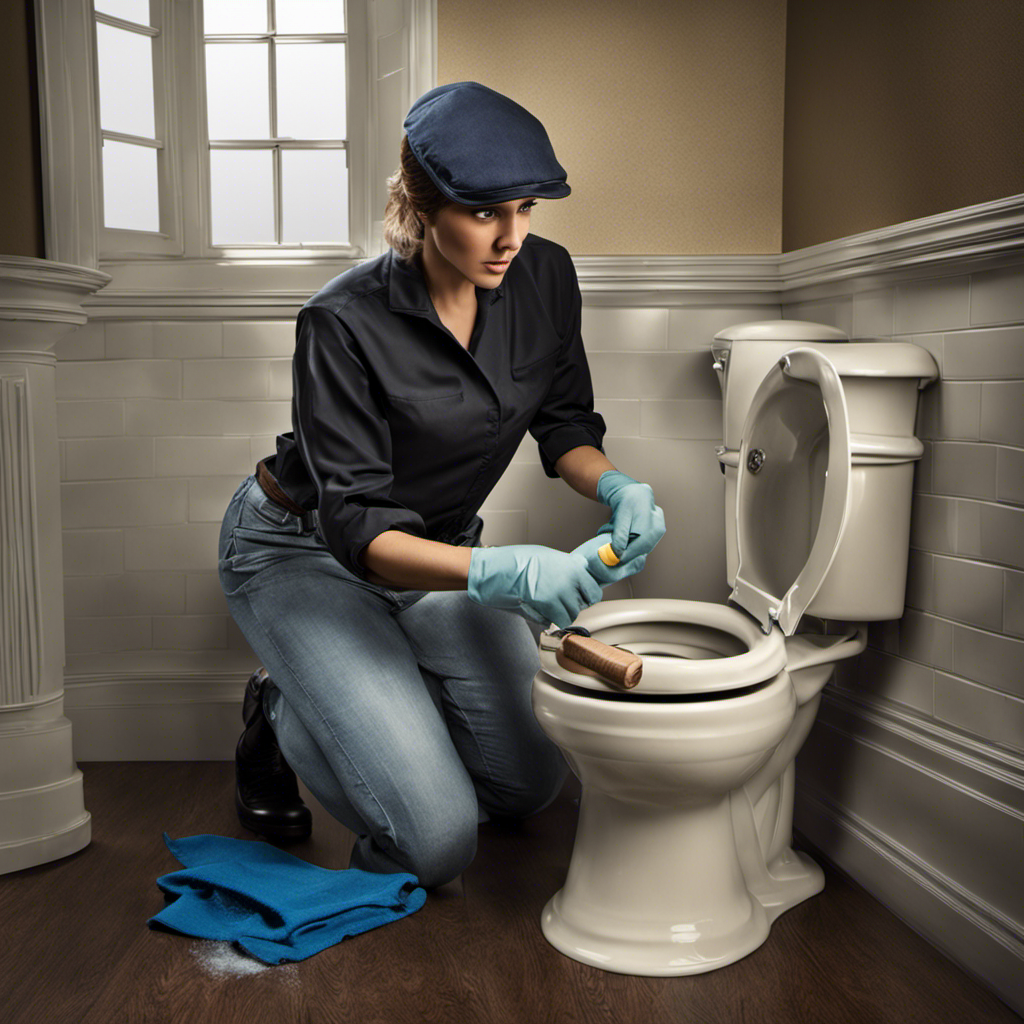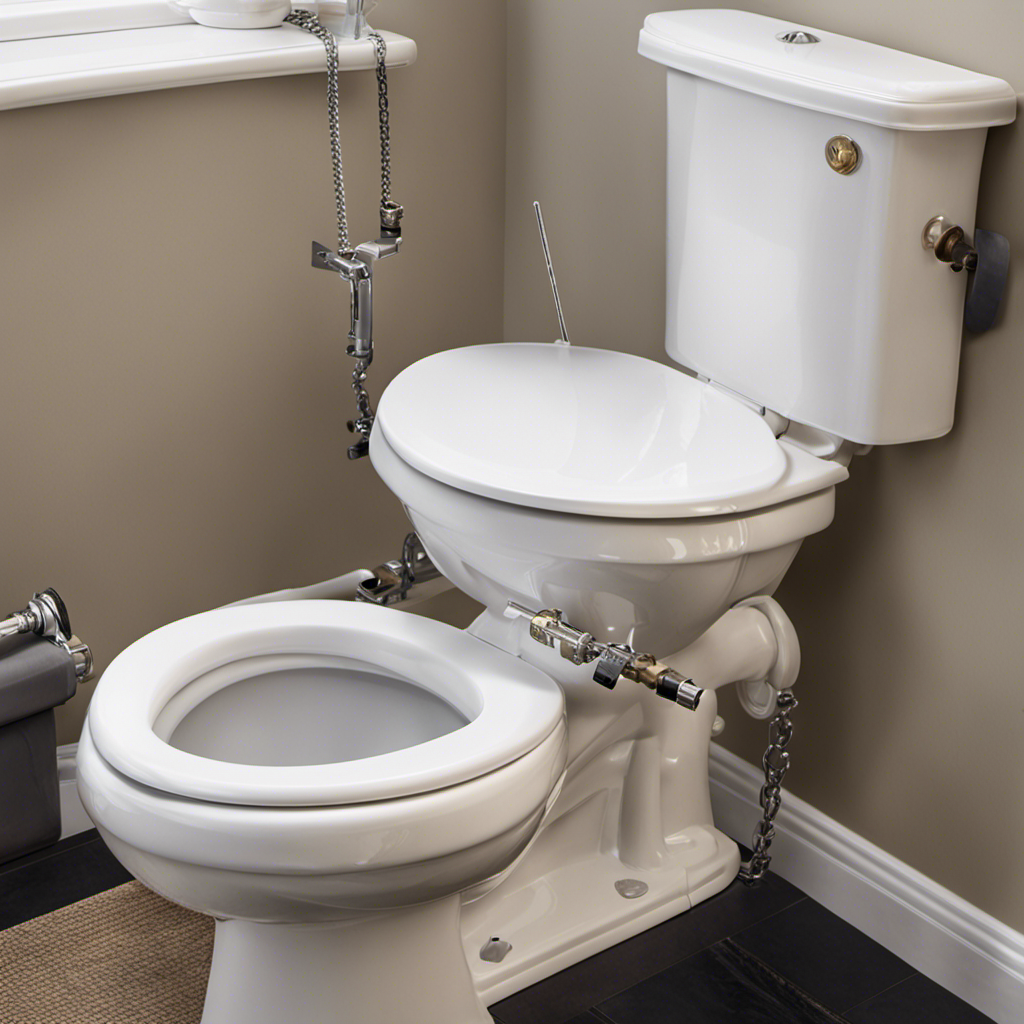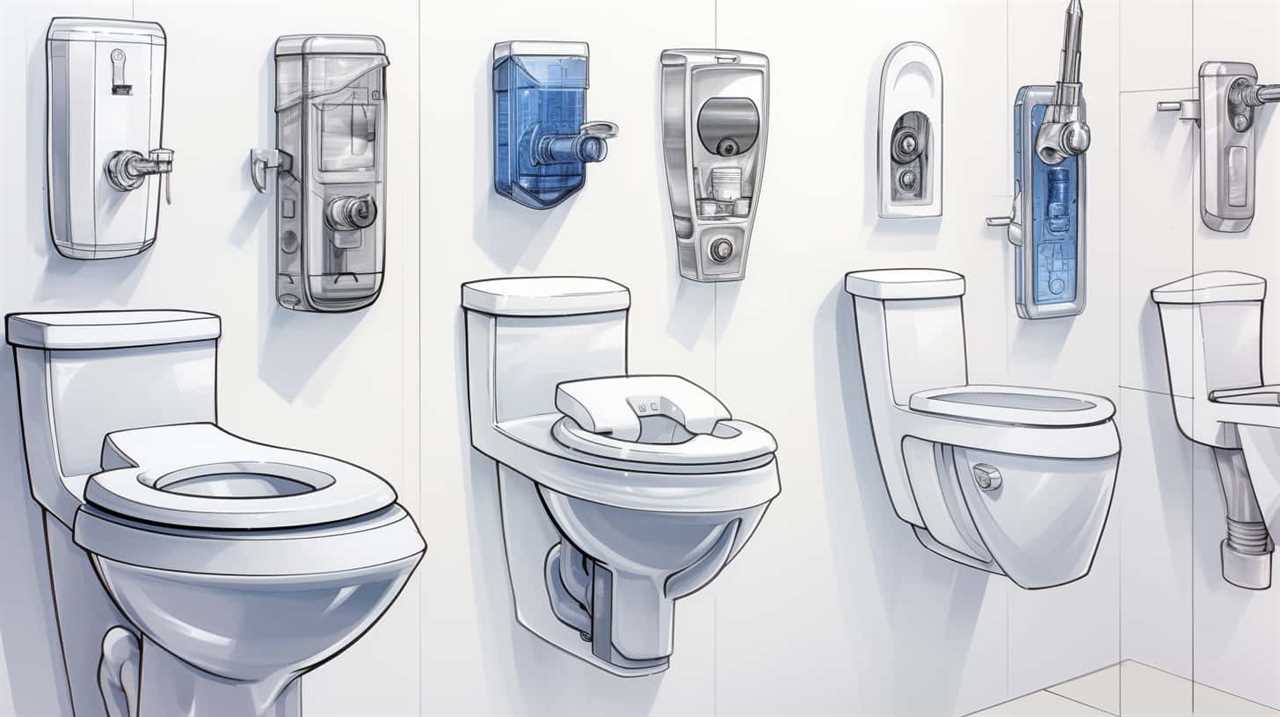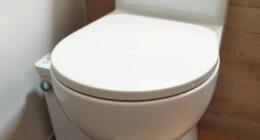Hey there!
Ever found yourself in a sticky situation with a clogged toilet? Well, fear not, because I’ve got you covered.
In this article, I’ll show you step-by-step how to unclog your toilet using simple tools and natural DIY methods. We’ll also discuss common causes of toilet clogs and preventive measures to avoid them in the future.
So, grab your plunger and let’s dive into the world of unclogging toilets!
Key Takeaways
- The common causes of toilet clogs include flushing excessive amounts of toilet paper, sanitary products, toys or foreign objects, excessive waste, and non-biodegradable items.
- Essential tools for unclogging a toilet include a toilet plunger with a rubber suction cup, a plumber’s snake (toilet auger), a bucket and towels for catching overflowing water, protective gloves for hygiene, and drain cleaner as a last resort.
- The step-by-step guide to unclogging a toilet involves positioning the plunger over the drain hole, applying firm pressure and creating suction by rapidly pushing and pulling the plunger, flushing the toilet to check if the clog is cleared, repeating plunging or using a plumber’s snake if needed, and practicing preventive measures to avoid future clogs.
- Natural DIY methods for toilet unclogging include using a mixture of baking soda and vinegar to dissolve the blockage, pouring 1 cup of baking soda into the toilet bowl, slowly pouring 2 cups of vinegar and letting it sit for 30 minutes, flushing the toilet to check if the clog is cleared, and considering professional plumbing services or unclogging products if the clog persists.
Common Causes of Toilet Clogs
One of the most common causes of toilet clogs is flushing excessive amounts of toilet paper. To prevent toilet clogs, it is important to be mindful of how much toilet paper you are using and to flush in small increments rather than all at once.
Signs of a clogged toilet include water rising to the brim when flushing, slow draining, and a gurgling sound coming from the pipes. If you notice any of these signs, it is important to address the issue promptly to avoid further damage.
In the next section, I will discuss the essential tools for unclogging a toilet, which will help you tackle the problem with ease.
Essential Tools for Unclogging a Toilet
There are essential tools you’ll need to unclog your toilet. Here’s a step-by-step guide on how to use them effectively:
-
Toilet Plunger: This is the most common tool for unclogging toilets. Make sure you have a good quality plunger with a rubber suction cup. Place the plunger over the drain hole and push down firmly. Then, rapidly push and pull the plunger to create a suction effect.
-
Plumber’s Snake: If the plunger doesn’t work, a plumber’s snake can be your next option. Insert the snake into the drain hole and twist it while pushing forward. This will help break up the clog and allow it to move through the pipe.
-
Bucket and Towels: Before you start unclogging, grab a bucket and some towels to catch any overflowing water. This will help prevent a messy cleanup.
-
Protective Gloves: It’s important to protect yourself from any germs or bacteria. Wear disposable gloves to keep your hands clean and hygienic throughout the unclogging process.
Step-by-Step Guide to Unclogging a Toilet
To effectively unclog a toilet, start by using a good quality plunger with a rubber suction cup. This simple tool can often solve minor clogs without the need for professional toilet unclogging services.
Here’s a step-by-step guide to help you through the process:
-
Position the plunger: Place the rubber suction cup directly over the drain hole in the toilet bowl, ensuring a tight seal.
-
Apply pressure: Push down firmly on the plunger, then quickly pull up. Repeat this motion several times to create suction and dislodge the clog.
-
Check for results: Flush the toilet to see if the water drains properly. If the clog persists, repeat the plunging process or try using a toilet auger for tougher clogs.
To prevent future toilet clogs, remember to avoid flushing excessive amounts of toilet paper or foreign objects. Regularly cleaning the toilet and using a toilet bowl cleaner can also help maintain a clear drain.
Natural DIY Methods for Toilet Unclogging
If you’re dealing with a stubborn clog in your toilet, try using a mixture of baking soda and vinegar to naturally dissolve the blockage. Here’s a step-by-step guide to using this DIY method:
-
Gather the necessary materials: baking soda, vinegar, a measuring cup, and a toilet brush.
-
Pour 1 cup of baking soda into the toilet bowl.
-
Slowly pour 2 cups of vinegar into the bowl, allowing it to mix with the baking soda.
-
Let the mixture sit for about 30 minutes, allowing it to fizz and break down the clog.
After following these steps, you can try flushing the toilet to see if the clog has been cleared. If the clog persists, it may be time to consider using toilet unclogging products or contacting professional plumbing services for assistance.
Preventive Measures to Avoid Toilet Clogs
One way you can prevent toilet clogs is by being mindful of what you flush down the toilet. To maintain a clog-free toilet, it is essential to follow a few simple steps.
First, avoid flushing items such as flushable wipes, paper towels, or feminine hygiene products, as these can easily cause blockages.
Secondly, make sure to use toilet paper sparingly and only flush a reasonable amount at a time.
Additionally, regular toilet maintenance is crucial for preventing clogs. This includes cleaning the toilet bowl regularly and checking for any signs of a potential clog, such as slow draining or gurgling noises.
Lastly, if you notice any issues, address them promptly by using appropriate toilet unclogging techniques, such as a plunger or a plumbing snake.
Conclusion
So there you have it, a step-by-step guide on how to unclog your toilet. By following these simple instructions and using the right tools, you can easily tackle this common household problem.
Now, you might be thinking, ‘But what if I don’t have all the necessary tools?’ Don’t worry! I’ve also shared some natural DIY methods that you can try using common household items.
So go ahead and give it a try, and say goodbye to toilet clogs once and for all!










